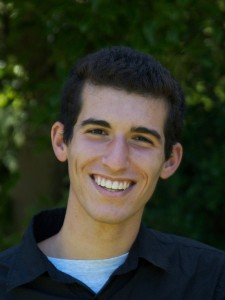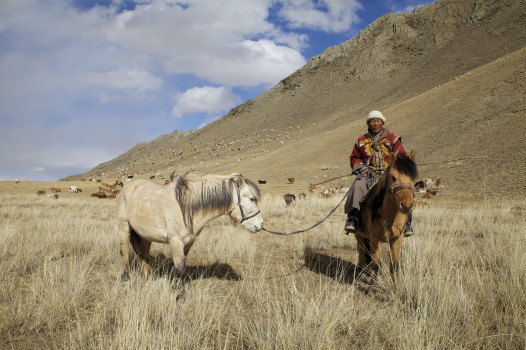To hear Sharon Litwin interview Dimitri Staszewski on WWNO public radio,click here.
Some people dream of getting off the grid, dropping out of the complications of our highly urbanized 21st century. One 21-year-old Loyola University student did just that — in Mongolia, of all places.

Dimitri Staszewski
Dimitri Staszewski grew up in San Francisco. No, he’s not Russian, although one could be forgiven for making such an assumption. He is, in fact, the child of a Dutch father of Polish descent and a mother from Boston of Italian descent. When it came time for college, Dimitri’s personal choices were to follow in his father’s footsteps and train to become a goldsmith and jewelry designer or go after his other dream: being part of the music recording industry. Since he had been to New Orleans once before and liked it, and Loyola University’s music school is well known for its music industry program, coming back to New Orleans was an easy decision.
In his sophomore year, Dimitri made another major decision: to spend a semester backpacking and living in the outdoors in a program put on by the National Outdoor Leadership School. This was an idea not greeted with huge enthusiasm by the Loyola Music School faculty. But Dimitri persuaded them that this would be a good thing for him to do, and they agreed.
He returned from that experience thinking about different lifestyles, wondering about other places where people lived and worked totally outdoors.
“Someone turned me on to the fact that there were still a number of nomadic herders living in Mongolia,” he recalls. “And after doing a little bit of research on line, I found out that this is true. And I thought, I need to go there.”
A year of research into learning about life in Mongolia led to the discovery of a study program run by the School for International Training. Dimitri signed up for a four-month stint. He’s the first to admit that his expectations of what he would experience were somewhat romanticized.
Landing in the capital city of Ulaanbaatar, Dimitri saw that the center part of this city of a million and a half people looked and felt like any city in the world, with its tall modern-looking buildings.
“But as you get out of that center which is very small, it looks like very Soviet-style architecture,” he says. “And outside of that there are these gers, which are like Mongolian yurts, circular tents that people have set up and are living in.”

Tseveng, a Mongolian nomadic herder
Now, more than half the country’s population lives in the city with their gers, taking up most of its geographic area. Dimitri says the increasing numbers of country folk flocking into town and setting up their tents make it a difficult place to live. It’s hard to get water, and there is poor sewerage. Coal is used to heat the tents in winters, which can be as cold as -50 degrees Fahrenheit. So pollution has become a major problem.
Arriving in February, Dimitri says he wore layers of clothing to stay warm in what was no worse than -20 degrees; although, when he went out on horseback in the windy countryside he said it felt even colder.
Friends he made in Ulaanbaatan told him about a herder they knew who was a really great singer. So with a translator and the audio and video equipment purchased through an online Kickstarter fundraising campaign, Dimitri went to stay with Tseveng in his ger in the countryside and record his music.
“I was really surprised at how open people were and how excited they were,” Dimitri says of the herders he met through Tseveng. Even though many lived a long way from one another in the vast, open country, as they moved with their herds, they would drop in on other herders that they knew.
“It’s very common for people to come and visit each other at night or even during the day once the herds are settled,” Dimitri explains. “It’s pretty crazy because they (herders) can actually tell each individual animal apart in sometimes a herd of a thousand animals. One day, the guy who was my host, his sheep got mixed up with another herder’s, and they spent the day getting them separated ,and they actually knew which one was which.”
Dimitri’s original idea was to create a documentary about the nomadic herders and their traditional music. But, after listening and looking at what he has, he has decided he needs to create a more multimedia project. So he has applied for a Fulbright scholarship and is hopeful it will come through and allow him to return to Mongolia to capture this quickly declining part of an ancient culture.
Below are more images from Dimitri’s travels in Mongolia.
Tseveng – A Mongolian Herder and Singer from Dimitri Staszewski on Vimeo.
Watch Dimitri’s video of a performance from Soumya, a former herder and Longsong singer:
Soumya – A Former Herder and Longsong Singer from Dimitri Staszewski on Vimeo.
 NOLAbeings Multimedia artist Claire Bangser created NOLAbeings as a portrait-based story project that marries...
NOLAbeings Multimedia artist Claire Bangser created NOLAbeings as a portrait-based story project that marries...  Voodoo in New Orleans: Reviving history: New Orleans fortune telling This article takes a deep dive into the history of Voodoo in New Orleans, its hybridization with Catholicism, and its present-day place in the city's culture. The author visits fortune-tellers in the French Quarter, using their guidance as a tool for introspection rather than a deterministic predictor of the future. Through her experiences in New Orleans, the author feels a mystical connection to both the past and the future.
Voodoo in New Orleans: Reviving history: New Orleans fortune telling This article takes a deep dive into the history of Voodoo in New Orleans, its hybridization with Catholicism, and its present-day place in the city's culture. The author visits fortune-tellers in the French Quarter, using their guidance as a tool for introspection rather than a deterministic predictor of the future. Through her experiences in New Orleans, the author feels a mystical connection to both the past and the future. 